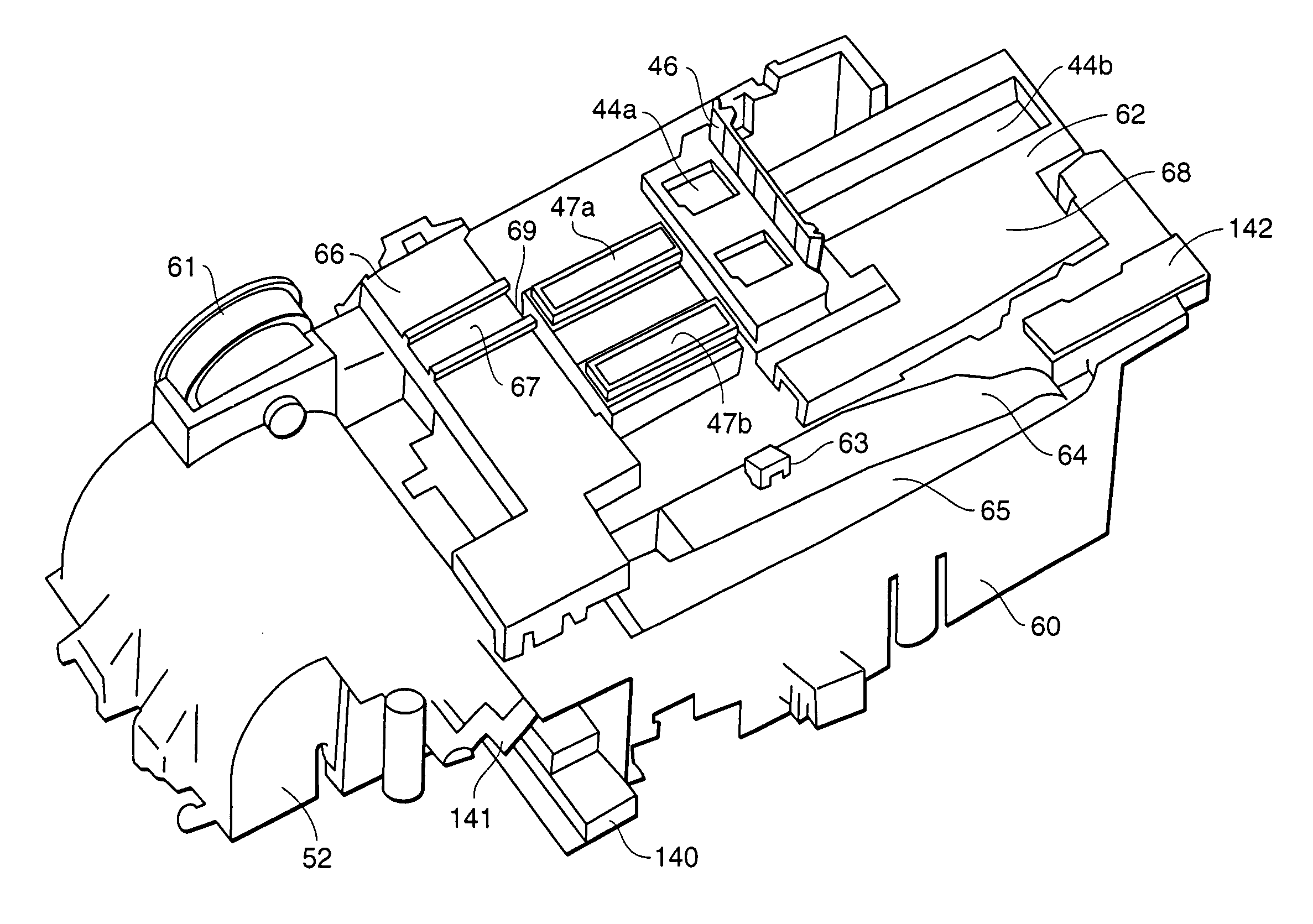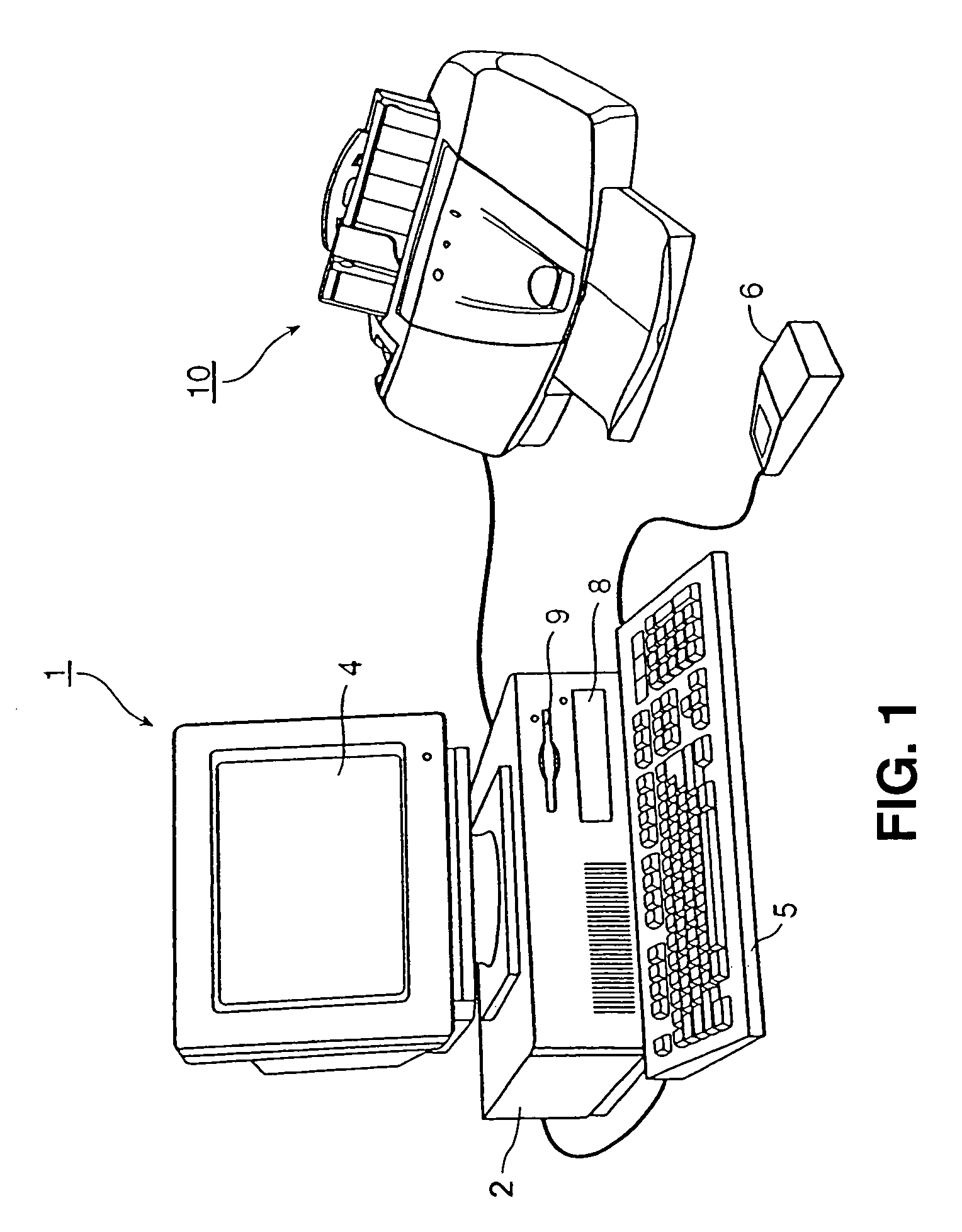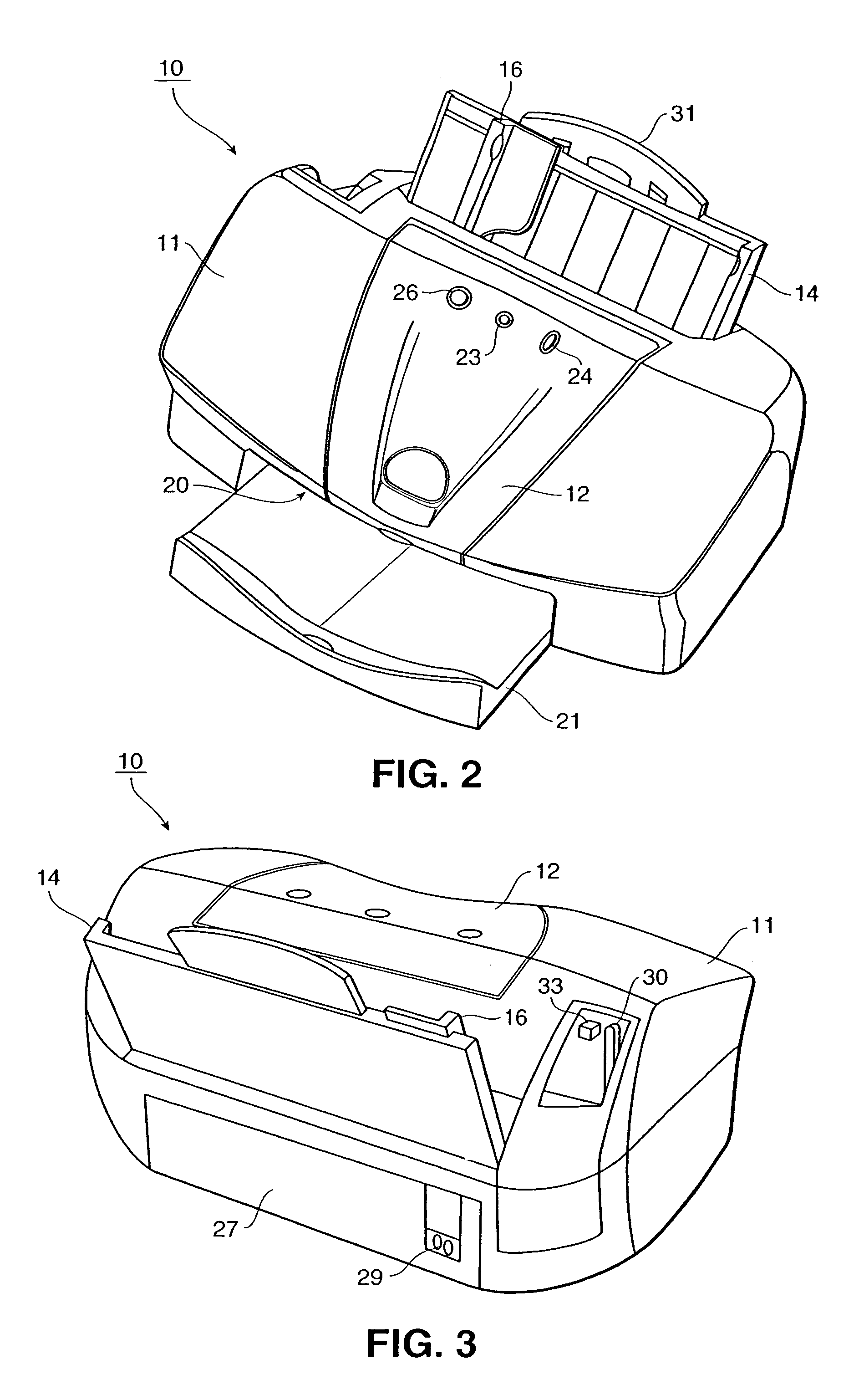In addition, paper
powder, dust and other contaminants may inadvertently adhere to the discharge surface of the print head.
Such contaminants can impair the ability of the discharge nozzles to properly eject ink onto the recording medium, and can thereby impair the quality of a recorded image on the printing medium and the
overall efficiency of the ink jet printing device.
This is particularly a problem when two different types of ink are ejected from two different sets of discharge nozzles, either in one print head, or in separate print heads.
In such a device, cross-
contamination of the different types of ink can occur on the respective discharge surfaces of the different sets of discharge nozzles.
For example, black ink ejected from a black ink print head might inadvertently adhere to the discharge surface of a color ink print head during printing, thereby blocking the discharge nozzles of the color print head.
In addition, inks of different types often react to result in a hardening of the combination ink on the discharge surface or, in the case of reaction inks, to quickly and strongly fix to the discharge surface, thereby impairing the operation of the respective discharge nozzles of the discharge surface.
While the conventional recovery
system is used to remove contaminants and residual ink from the discharge surface and discharge nozzles of the print head, such recovery systems cannot sufficiently maintain a good printing condition of the print head in many situations.
Accordingly, when such conditions cause the gap between the print head and the recovery
system to be inconsistent from one recovery operation to the next, the result of the wiping and capping operations will also be inconsistent.
A conventional recovery
system may also be insufficient to maintain the print head in a good printing condition in the case where different inks are used in the ink jet printing device.
If two different print heads are used which utilize two different types of ink, or if one print head is used which contains two sets of discharge nozzles which eject two different types of ink, problems can arise caused by cross-
contamination of the two different types of ink on respective discharge surfaces.
However, during printing operation of the print head, each cap is left exposed and is therefore susceptible to cross-
contamination by the adherence of ink which the cap is not intended to receive.
In addition, the caps are susceptible to contamination and damage from other sources, such as paper
powder, dust and / or from improper handling by the user of the ink jet printing device.
As discussed above, cross-contamination of the inks can cause the ink to fix on the cap, thereby reducing the ability of the cap to sufficiently form a seal on the print head.
In addition, cross-contaminated ink residing on the cap can be transferred to the discharge surface of that cap's respective print head during capping operations, thereby contaminating the print head and impairing the printing condition of the discharge orifices of the print head.
The use of two different types of ink can also cause contamination of the wiper blade.
Residuary ink particles are inadvertently distributed within the ink jet printing device during a printing operation and can adhere to the wiper blade while the wiper blade is not being used, thereby creating a cross-contamination of inks on the wiper blade.
Such cross-contamination can reduce the effectiveness of the wiper blade during wiping of the discharge surface of the print head.
In addition, a wiper blade which is cross-contaminated with two different kinds of ink can cause damage to a print head by contaminating the discharge surface of the print head with a different type of ink during a wiping operation.
The wiper blade is also susceptible to other damage and contamination while the wiper blade is left exposed to the environment when not being used.
The exposed wiper blade is therefore susceptible to other contaminants such as dust and paper
powder, and is susceptible to damage from improper handling by the user of the ink jet recording device.
In addition to the above problems, the typical recovery system is often insufficient to remove residuary ink which is adhered to and dried on the discharge surface and discharge orifices of the print head.
However, if the prefire operation is performed near the recovery system, it may contaminate the cap, wiper and other parts with ink.
In such a case, the time required to move the print head after prefiring to the location of the wiping blade for wiping can result in
drying of the prefire ink prior to wiping, thereby reducing the effectiveness of the prefire operation.
Otherwise, cross-contamination of inks may occur within the ink jet printing device during prefiring which may impair the performance of parts affected by the contaminated ink.
A problem also occurs in conventional ink jet printing devices during capping of the print head when the cap is applied too quickly or forcefully to the print head.
For example, if the cap is raised too quickly during the capping operation to engage the print head, or is applied to the print head with too much pressure, the cap can damage the discharge surface and discharge orifices of the print head.
In addition, the foregoing conditions can result in the creation of
positive pressure between the cap and the print head during the capping operation, thereby forcing air through the discharge nozzles, resulting in damage to the print head and the ink supply system by introducing air and air bubbles through the discharge nozzles into the print head.
Lastly, the use of two different types of ink in an ink jet printing device can cause cross-contamination of the respective sets of discharge nozzles, whether on one print head or on two separate print heads, when using a single wiper blade to wipe all discharge nozzles.
For example, the use of a single wiper blade to wipe two different sets of discharge nozzles, each of which discharges a different type of ink, can result in the mixing of the two different inks on the single wiper blade which can cause cross-contamination and damage to the discharge orifices during subsequent wipings.
In addition, if a print head is used which has an uneven print
head surface, a single flat wiper blade cannot effectively wipe the discharge surface of the print head because the edge of the wiper blade will become distorted by the uneven discharge surface of the print head.
In such a situation, the wiper blade will skip over areas of the discharge surface and will therefore be ineffective to clean residuary ink from the discharge surface.
 Login to View More
Login to View More  Login to View More
Login to View More 


